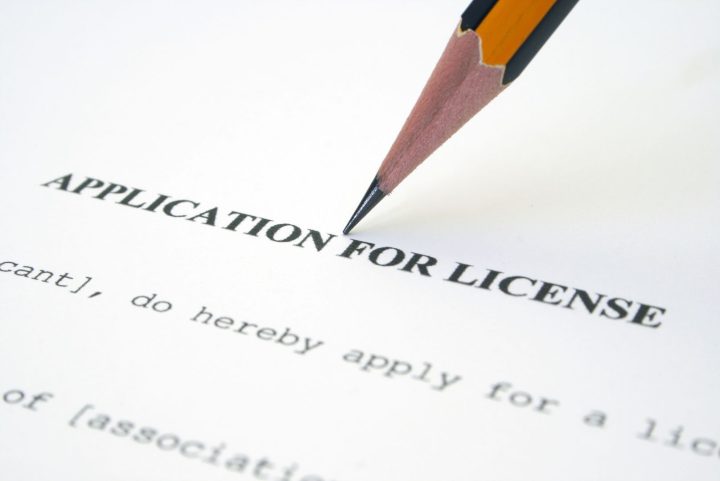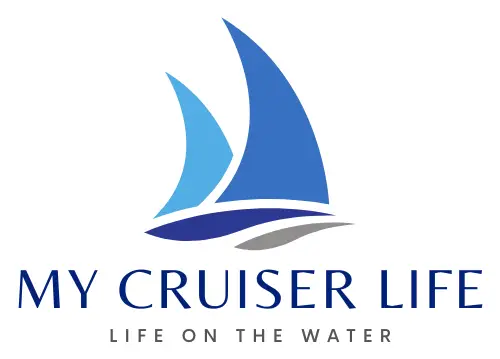Understanding boating license requirements by state can feel confusing since rules differ dramatically across the country. As of 2025, each jurisdiction sets its own requirements for who needs boating education and certification. Most states don’t actually issue a “boating license” at all—instead, they require completing a boater education course and carrying a safety certificate or boater card.
The U.S. Coast Guard found that nearly 70 percent of approximately 7,700 annual boating accidents are caused by operator error rather than boat or environmental factors. The authority to regulate recreational boating is split between federal and state jurisdictions. The U.S. Coast Guard handles certain federal requirements, particularly for commercial vessels and safety equipment standards. Individual states decide who needs education or certification to operate recreational boats. The National Association of State Boating Law Administrators (NASBLA) works to create consistency across state lines, but each state writes its own rulebook. Currently, over 36 states have mandatory boater education requirements, though what triggers that requirement varies based on age, birth date, motor size, or vessel type.

Table of Contents
- Federal vs. State Boating Regulations
- What “Boating License” Really Means
- Map of State Requirements – Quick Snapshot
- Examples of Stringent vs Lenient States
- Age, Vessel Type & Motor-Size Criteria
- Reciprocity & Moving Between States
- Penalties & Why Compliance Matters
- How to Get Started – Step by Step
- FAQs – Boating License Requirements by State
Federal vs. State Boating Regulations
There’s no single federal “boat driver’s license” for most recreational boaters. The regulatory landscape splits authority between federal and state governments.
The U.S. Coast Guard sets mandatory federal requirements for recreational vessels, covering required safety equipment including life jackets, fire extinguishers, visual distress signals, sound-producing devices, and ventilation systems. These baseline safety standards apply nationwide. The Coast Guard also handles vessel documentation, accident reporting requirements, and enforcement of federal navigation rules.
When it comes to operator licensing or certification, that authority falls to individual states. While federal boating laws enforced by the U.S. Coast Guard cover general and permanent regulations, state boat rules address topics specific to each jurisdiction, including operator education requirements, age restrictions, and vessel registration.
NASBLA works as a bridge between various state agencies. They’ve developed standardized boating education curricula that states can adopt, creating consistency across state lines. When a course is NASBLA-approved, it meets national standards that make reciprocity between states possible. Each state retains the right to set specific requirements.
Federal equipment requirements are minimum standards. Vessel owners and operators must comply with both federal requirements and any additional state-specific regulations where the vessel is registered or operated. This dual system exists because boating conditions, vessel types, and safety concerns vary dramatically between states.
Related: What Size Boat Requires A Captain’s License? And Other Licensing Matters
What “Boating License” Really Means
A boater education card, sometimes called a boating license, is proof that you’ve completed an approved boating safety course. Unlike a driver’s license that expires and requires renewal, the boater education card does not expire and does not need to be renewed. Once earned, it’s valid for life with no renewal fees or retesting.
A driver’s license is an official piece of ID that must be renewed and allows you to operate specific vehicle types. A boating certification is not an official ID, never expires, and qualifies you to operate motorized pleasure craft if you meet state-specific age requirements.
Only one state—Alabama—requires an actual boat license. Most states with mandatory education requirements issue boating safety certificates or boater education cards instead. Requirements are typically triggered by age, date of birth, and vessel type. Many states use birth date cutoffs—anyone born after January 1, 1988, might need certification, while older boaters are grandfathered in. Personal watercraft often have stricter requirements than regular motorboats.
The certification requires passing an approved boater safety course covering navigation rules, safety equipment, emergency procedures, buoys and markers, and boat operation fundamentals. Courses are available online and in classrooms, usually taking just a few hours to complete.
Map of State Requirements – Quick Snapshot
As of 2025, about 36 states have mandated some form of educational requirements for operating boats or personal watercraft on state waters, with some states currently phasing in these requirements.
States With Universal or Near-Universal Requirements:
California requires a boater card for all persons over age 16 to operate any motorized vessel with more than 15 horsepower. As of January 2025, all persons, regardless of age, must have the California Boater Card.
New York completed its phased implementation in 2025, meaning everyone operating a motorized vessel must now have a valid Boater Safety Certificate, regardless of age or birth year.
Florida requires anyone born on or after January 1, 1988, to have a Boating Safety Education ID Card to operate any motorized vessel of 10 horsepower or greater.
States With Birth-Date or Age-Based Requirements:
Many states use birth-date cutoffs, requiring education for those born after dates ranging from the 1970s through the 1990s. North Carolina requires it for those born after January 1, 1988. Maryland uses July 1, 1972. Ohio uses January 1, 1982. Requirements typically apply when operating motorboats above 10 hp thresholds.
States With Age-Only Requirements:
Some states focus purely on the current age. Virginia requires education for all PWC operators aged 14 and older, plus anyone operating motorboats with 10 hp or greater engines. Iowa requires boaters between the ages of 12 and 17 to complete education courses for boats over 10 hp.
States With No Mandatory Requirements:
As of 2025, Alaska, Arizona, Idaho, Indiana, South Dakota, and Wyoming remain the only states with no mandatory education requirements to operate any recreational vessel.
PWC-Specific Requirements:
Personal watercraft often face stricter rules. Many states that don’t require education for regular motorboats still mandate it for PWC operators.
Minnesota implemented new education requirements beginning July 1, 2025, expanding who needs a watercraft operator’s permit. The law phases in gradually, applying to more age groups over the coming years.
Related: What Equipment Is Required to Be on a Boat Trailer: Complete Safety & Legal Guide
Examples of Stringent vs Lenient States
California: Comprehensive Requirements
As of January 1, 2025, all boaters operating motorized vessels in California must possess a California Boater Card regardless of age. This culminated in a phased rollout starting in 2018 with younger operators and gradually expanding to older age groups. Anyone 16 or older operating anything with a motor needs the card.
California’s approach requires completing a NASBLA-approved course, passing the exam, and paying a one-time $10 application fee. Operating without the card carries escalating fines: $100 for first conviction, $250 for second offense, and up to $500 for third offense, plus mandatory completion of a boater safety course. Kids aged 12-15 can operate vessels with motors of 15 hp or more only under the direct supervision of someone 18 or older who has a valid boater card.
Florida: Birth-Date System
Florida mandates that anyone born on or after January 1, 1988, must complete a NASBLA-approved course to operate vessels with 10-horsepower or greater engines. Those born before 1988 can legally operate boats without education. Florida offers temporary certificates valid for 90 days for visitors and renters. PWC operators must be at least 14, and renting PWCs to anyone under 18 is illegal.
New York: Universal Implementation
New York’s “Brianna’s Law” completed its phased implementation in 2025, requiring all boaters to have certification regardless of birth year. PWC operators must be at least 14 with a certificate. Operators aged 10-13 can operate PWCs only with an adult certificate holder aboard.
Alaska and Arizona: No Requirements
Alaska has no mandatory boating education requirements and doesn’t regulate commercial vessels on its state waters. There’s no minimum age to operate vessels, and no license or certification is required, regardless of boat type, engine size, or operator experience. Arizona has no mandate for boating safety education and licensing for the general public operating recreational boats.

Age, Vessel Type & Motor-Size Criteria
Requirements for those who need education are typically tied to three main factors that mark increased risk:
Age-Based Requirements:
- Young operators are universally targeted for mandatory education
- Iowa requires boaters between the ages of 12 and 17 to complete education courses for boats over 10 hp
- Kansas applies requirements to boaters ages 12-20 operating without an adult companion
- Younger age groups are more likely to be inexperienced and take risks
Birth Date Cutoffs:
- Common examples include operators born after dates like January 1, 1988, or May 1, 1996
- Grandfathers experienced older boaters who learned before formal education programs
- Gradually increases the percentage of educated boaters without forcing longtime operators into courses
- Eventually reaches near-universal education as older generations age out
Engine Size Thresholds:
- Many states exempt very small motors from education requirements, typically those under 10 horsepower
- Ten horsepower emerged as a common cutoff, though Maine uses 25 hp
- Small trolling motors pose minimal risk compared to larger, faster engines
- Sailboats without engines are often exempt; adding a motor above a certain horsepower triggers requirements
Personal Watercraft – Special Category:
- A 1997 study estimated that 84% of PWC operators, including renters, had received no boating instruction. PWC injuries account for 36% of all reported boating injuries
- Many states mandate education for PWC operators, even without requiring it for regular motorboats
- Age restrictions often stricter—may operate a fishing boat at 12, but need to be 14 or 16 for PWC
- Additional requirements include mandatory life jacket wear, operational hour restrictions, and distance requirements from shore
Reciprocity & Moving Between States
The National Association of State Boating Law Administrators approves courses that meet education standards. When completing a NASBLA-approved course, certification is valid in all 50 states and U.S. territories.
According to NASBLA education directors, adult boaters visiting another state with a boater education card displaying the NASBLA-approved logo should generally be accepted, though some local restrictions may apply, such as additional endorsements for personal watercraft.
However, the reciprocity period allowed for operating on an out-of-state boating card varies from state to state and can range anywhere from zero to 90 days. Alabama, Delaware, and Maine accept any NASBLA-approved education course from any other state. Michigan doesn’t have reciprocity at all. Colorado only accepts certificates from states whose safety courses are proctored.
State-to-state agreements can create special exceptions. A visitor to Connecticut from New Jersey with a New Jersey boating certificate wouldn’t be able to operate a PWC, but a visitor from Rhode Island with a Rhode Island certificate would be allowed to operate one.
Most states extend courtesy to visitors for 30, 60, or 90 days. When relocating permanently, check the new state’s requirements for residents. If moving to Connecticut from New York, New Hampshire, Rhode Island, or Massachusetts, licenses can be “switched out” within 90 days of becoming a resident.
Before traveling or moving, visit NASBLA’s website for state requirements and reciprocity information. Contact state boating agencies directly when uncertain. Always carry your boater education card and photo ID when operating boats anywhere. Taking time to learn destination-specific waters, local hazards, and unique regulations remains important regardless of reciprocity.
Penalties & Why Compliance Matters
In California, first-time offenders caught operating without the required boater card face a $100 fine. Second offense jumps to $250, and third offense can hit $500. Plus, if convicted, completing a boater safety course becomes mandatory.
New Jersey has minimum fines of $100 and maximum fines up to $500 for operating a powerboat without the required certificate. Penalties increase for repeat offenses, potentially including jail time. First offenses are relatively modest, but repeated violations face increasingly harsh penalties.
Many insurance companies offer discounts to boaters with safety education certificates. However, operating without the required certification can result in insurance companies denying claims or canceling policies. Causing accidents while operating illegally increases personal liability exposure.
Law enforcement and wildlife officials conduct checks, and operators must be able to present certification cards and photo ID when requested. Enforcement typically occurs during routine safety inspections, after stops for other violations, or following accidents.
Coast Guard data shows that 74% of boating deaths occurred on vessels commanded by skippers with no known operator instruction, while only 14% of deaths occurred where the operator had received a nationally approved boating safety education certificate. Education teaches navigation rules that prevent collisions, weather awareness, proper safety equipment use, and emergency preparedness.
How to Get Started – Step by Step
Step 1: Check Your State’s Specific Requirements
Visit your state’s boating agency website (usually within the Department of Natural Resources, Fish and Wildlife, or Parks department). Look for boater education requirements, age restrictions, and covered vessel types. NASBLA’s website has a comprehensive state-by-state dashboard with direct links to each state’s boating agency.
Step 2: Choose an Approved Course Provider
Major NASBLA-approved providers include Boat-Ed, iLearnToBoat, BOATsmart, BOATERexam, and Drive a Boat USA. These organizations have developed courses specifically approved by state boating agencies and meet NASBLA’s national standards. The BoatUS Foundation also offers free courses in some states. Most states accept fully online courses. Fees typically range from $30-50, including course materials, practice tests, final exam, and temporary certificate.
Step 3: Complete the Course at Your Own Pace
Online courses work on smartphones, tablets, laptops, or desktop computers. Complete the course at your own pace—in one sitting or over several days. The system saves progress automatically. Most students finish in 3-6 hours. Material covers navigation rules and right-of-way, required safety equipment and usage, understanding buoys and markers, boat handling and operation, state-specific regulations, weather and environmental hazards, emergency procedures, and legal responsibilities.
Step 4: Pass the Final Exam
All states require passing a test, typically multiple-choice questions. Most providers offer unlimited retries at no additional cost. Exams are usually open-book, allowing reference to course materials while testing.
Step 5: Get Your Temporary Certificate Immediately
Once you pass the exam, immediately print a temporary certificate. This temporary certificate, along with a photo ID, allows legal boat operation while waiting for the permanent card. Temporary certificates are typically valid for 60-90 days.
Step 6: Apply for Your Permanent Card
For some states, course providers handle applications automatically. For others, submit an application to your state boating agency with proof of course completion. California requires a one-time application fee of $10. Once issued, the card is valid for life. Processing times vary by state, typically 2-6 weeks.
Step 7: Keep Your Card Accessible
Once you receive your card, keep it with you whenever operating a boat. In states requiring certification, carry the card and be able to present it to law enforcement upon request. Many boaters keep cards in waterproof cases stored in consistent boat locations.
Lost your card? Most states and course providers can issue replacement cards. Contact your original course provider or state boating agency for duplicates. Small replacement fees typically apply.
Pro Tips:
Sign up for family or group courses if multiple household members need certification—many providers offer discounts. Take your time with the material rather than rushing through. Even if you’re an experienced boater, you’ll likely learn something new. Review state-specific sections carefully since those details won’t apply in other states and are easy to miss. And consider taking a refresher or on-water training course even after certification. The card gets you legal, but additional practice makes you genuinely confident and skilled.
The whole process from signup to having your card typically takes less than a week (if you knock out the course in one day) to a few weeks (if you space it out and wait for the permanent card to arrive). Either way, it’s a small time investment that pays off in legal compliance, insurance discounts, and most importantly, actually being safer on the water.
FAQs – Boating License Requirements by State
Do you need a licence to drive a boat in the USA?
There’s no federal boating license in the USA. Requirements vary by state. About 36 states mandate boater education for operating motorized vessels, typically based on age, birth date, or vessel type. Alaska, Arizona, Idaho, Indiana, South Dakota, and Wyoming have no mandatory requirements. Most states issue boater education cards (valid for life) rather than traditional licenses. Check your specific state’s requirements.
What size boat requires a license in the USA?
Most states requiring boater education set thresholds based on engine horsepower rather than boat size, typically 10 horsepower or greater. Requirements vary significantly—some states mandate certification for all motorized vessels, while others exempt small motors. Personal watercraft (PWCs) often have stricter requirements than regular boats, with PWC injuries accounting for 36% of all reported boating injuries. Check your state’s specific horsepower and vessel type requirements.
How to get a boating license in the USA?
Take a NASBLA-approved course from providers like Boat-Ed, iLearnToBoat, BOATsmart, or BOATERexam. Complete the online course at your own pace (typically 3-6 hours) on any device. Pass the final exam with unlimited retries. Print your temporary certificate immediately and apply for your permanent card. Cards are valid for life with no renewal required. Courses cost $30-50 or are sometimes free.
